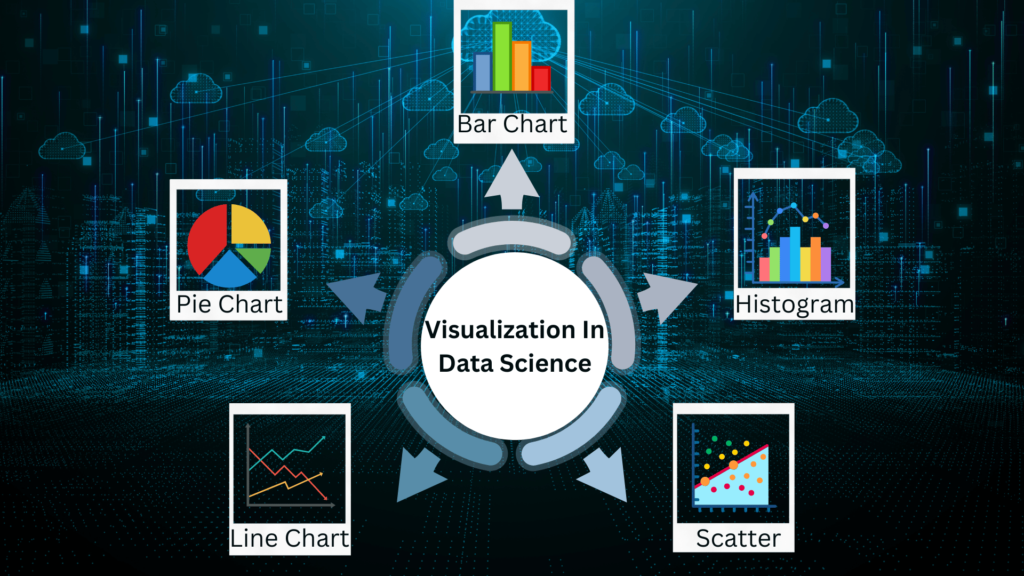Entering the dynamic data science landscape demands grasping its potential and challenges, which is crucial for newcomers. In the evolving tech scene, data science nurtures innovation and informed decision-making. This interdisciplinary field uses scientific methods and algorithms to extract data insights, linking to fields like business, health, education, and social sciences. Understanding the terrain is crucial.
As we explore crucial aspects like data analytics, various analytics types, and diverse learning paradigms, this article becomes a guiding compass. Moreover, it offers insights into the essentials of this dynamic field. Additionally, we’ll cover regression techniques, statistical methodologies, sampling methods, visualization tools, and diverse roles within the field.
Data Analytics Landscape
The data analytics landscape is essential in data science, involving the collection, processing, and analysis of data to derive valuable insights. It involves collecting diverse data, organizing it, and using tools for analysis. Businesses use predictive analytics for informed decision-making and trend forecasting. The landscape embraces emerging technologies like real-time analytics and artificial intelligence. The landscape embraces emerging technologies like real-time analytics and artificial intelligence. Data governance is vital for ensuring quality, compliance, and security, highlighting the need for a thorough understanding to use data effectively. In today’s data-driven approaches, skilled data analysts play a growingly important role. Data analytics revolves around extracting insights using statistical tools and visualizations, encompassing diverse analysis types.
Which Two Types of Analytics does Data Science Focus on?
In the vast data science landscape, two crucial analytics types stand out: predictive and prescriptive. Predictive analytics, addressing “What will happen?” foresees future data through techniques like regression, classification, and machine learning. It anticipates outcomes in various phenomena. On the other hand, Prescriptive analytics, addressing “What should we do?” recommends optimal actions using techniques. These are optimization, simulation, and decision analysis. It enhances the performance of phenomena or problems. Advanced analytics in data science, crucial for decisions, employs machine learning, AI, NLP, computer vision, and deep learning for insights.
Types of Learning in Data Science
Learning involves gaining knowledge or skills from data or experience. In data science, learning occurs through supervised, unsupervised, and reinforcement methods.
Types of Learning in Data Science
- Data has labels, learning input-to-output mapping for regression or classification.
- Uses regression, decision trees, and neural networks for data analysis and pattern recognition.
Unsupervised Learning
- No labels; focuses on understanding data structure or patterns using hierarchical clustering, K-means, PCA, as well as methods for clustering and reducing dimensionality.
Reinforcement Learning
- Involves agents interacting with an environment to learn a policy for maximizing rewards.
- Applied in control and optimization tasks, utilizing Q-learning, policy gradient, and deep Q-network.
Types of Regression in Data Science
Regression, a supervised learning type for continuous output, models relationships in data science. Linear, logistic, polynomial, ridge and lasso regressions are key tools, aiding predictive accuracy and informed decisions in data science.
Linear Regression:
Models a linear relationship between features and the target, estimating slope and intercept for best-fit line minimizing errors.
Logistic Regression:
Models binary target probability based on features, estimating odds ratio and logit for best-fit curve.
Polynomial Regression:
Models nonlinear relationships by transforming features into higher-degree terms, estimating coefficients for best-fit polynomial.
Ridge Regression:
Addresses correlated features with a penalty term, estimating slope and intercept for best-fit line with minimized errors.
Lasso Regression:
Addresses correlated features with a penalty term, reducing coefficients to minimize errors for best-fit line.
Types of Statistics in Data Science
Statistics forms the foundation of data science, furnishing essential tools for analysis and interpretation, including descriptive, inferential, and exploratory statistics.
Descriptive Statistics:
Summarize data characteristics like mean, median, standard deviation, quartiles, aiding basic understanding of a dataset.
Inferential Statistics:
Utilizes tools like confidence intervals, hypothesis testing, and ANOVA to make inferences about populations from samples for generalization.
Exploratory Statistics:
Uses correlation, covariance, scatter plots, and regression tools to identify potential factors and discover patterns and relationships in datasets.
Types of Sampling in Data Science
Sampling, selecting a subset from a larger dataset, is vital in data science. Various methods minimize complexity, cost, and time:
- Random Sampling: Equal chance for each element, ensuring a representative and unbiased sample.
- Stratified Sampling: Dividing data into homogeneous groups ensures proportional and accurate samples.
- Cluster Sampling: Dividing data into heterogeneous groups; a random sample of clusters ensures feasibility.
- Systematic Sampling: Selecting elements at fixed intervals ensures simplicity and uniformity.
- Convenience Sampling: Elements chosen for availability prioritize quickness and simplicity in the sample.
Types of Visualization in Data Science
Visualization presents data graphically. In data science, various types are used to communicate, explore, and understand data effectively.

Types of Data Science Roles
Within the dynamic data science landscape, diverse roles contribute to the holistic functioning of a data-driven organization. Roles include Data Scientist and Data Analyst. More are as follows:
Machine Learning Engineer:
Develops and deploys ML models, using programming and ML skills for tasks like prediction and natural language processing.
Data Engineer:
Builds and oversees data infrastructure, using programming skills for ETL processes to ensure quality, availability, and scalability.
Database Administrator:
Oversees database operations, ensuring integrity, availability, and performance with administration and security expertise.
Road Ahead
The road ahead in the data science landscape emphasizes continuous learning. Staying relevant demands keeping up with ML, AI, and data governance advancements. Adaptation to emerging technologies is crucial for success. Collaboration across diverse roles, refining statistical and analytical skills are crucial. Embracing evolving tools is essential for navigating the ever-changing data science terrain and driving innovation in various industries.
In conclusion, navigating the dynamic data science landscape requires a blend of curiosity and adaptability. Delving into analytics, learning paradigms, and essential techniques sparks continuous exploration. Embrace innovation for a thriving future in data science. Embrace the ever-evolving tools, collaborate across roles, and stay committed to learning for a thriving future in this innovative domain.

